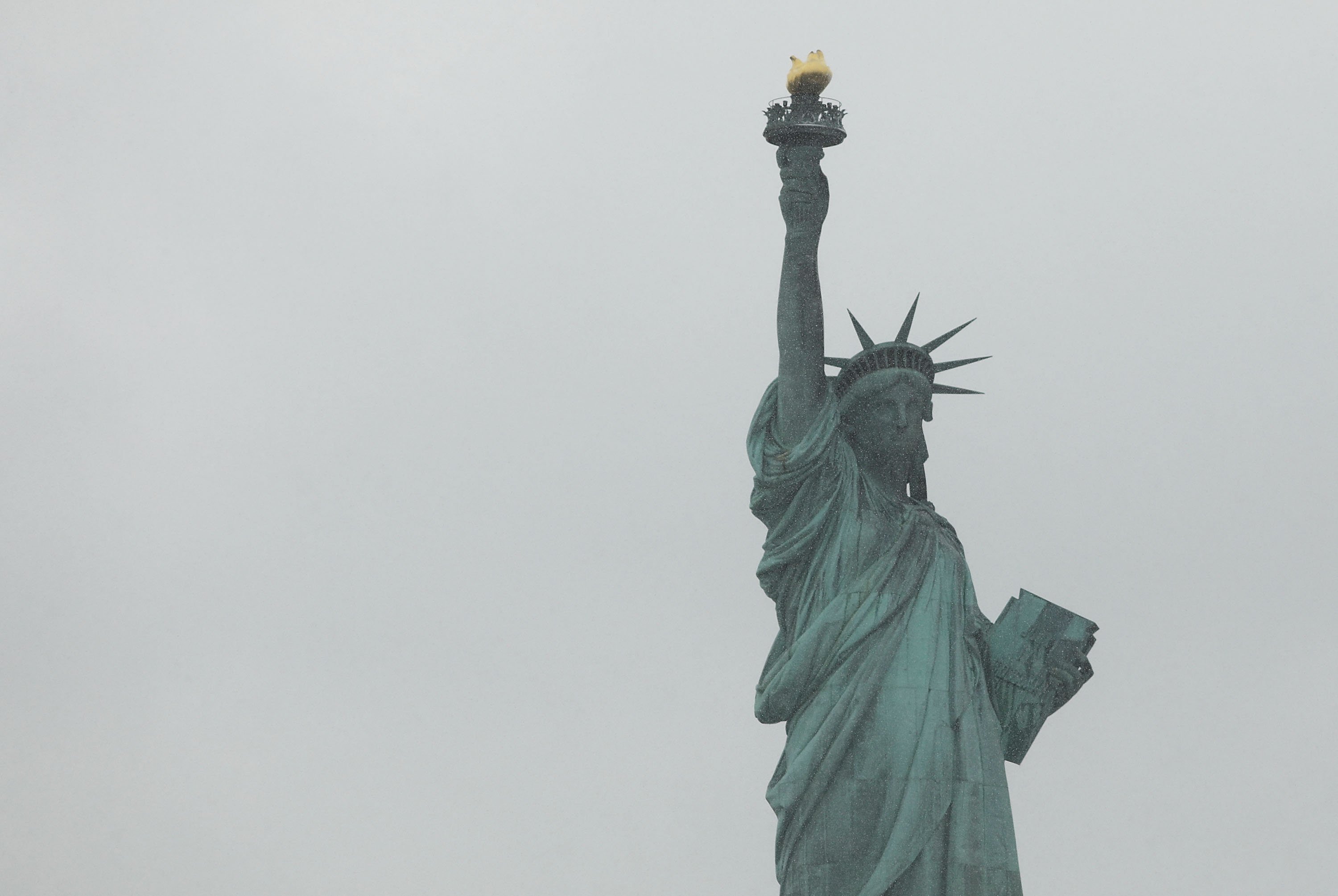
Standing at the mouth of New York Harbor, The Statue of Liberty is one of the world’s most recognizable works of art. But newly discovered papers from the workshop of its engineer Gustave Eiffel, show slightly different plans for the statue’s upraised arm.
Among a cache of 22 original engineering drawings of the 151-foot-tall statue, designed by Frédéric Auguste Bartholdi, is one that shows revisions to the arm, reports Smithsonian Magazine. It appears bulkier and extended upward at less of an angle, presumably to render the design more structurally sound.
Barry Lawrence Ruderman Antique Maps, Inc. of La Jolla, California, snapped up the collection of papers from the Établissements Eiffel, the great engineer’s workshop at Levallois-Perret, Paris, at a Paris auction in 2018.
The catalogue had described the lot as containing Statue of Liberty blueprints, of which only two existing sets are known—Bertholdi’s set of 10 blueprints, which is housed in a private French collection, and the 12 blueprints at the Library of Congress in Washington, DC, from the workshop of architect Robert Morris Hunt, who designed the statue’s pedestal. But the archive, which dates from 1880 to 1883, also included a stack of papers, folded so tightly one couldn’t open them safely.
This engineering drawing of The Statue of Liberty by Frédéric Auguste Bartholdi shows changes to Gustave Eiffel’s design. Courtesy of Barry Lawrence Ruderman Antique Maps.
“The conservation was very labor-intensive and meticulous. The drawings were made on 19th-century papier calque that had become friable and nearly impossible to unfold without additional humidification and really careful work by the conservator,” Ruderman director Alex Clausen told Artnet News. “I think this is why the drawings had remained hidden for so long.”
After a stint in the humidification chamber, the papers were found to feature no fewer than 22 original engineering drawings of the famous statue, in addition to the architectural archive’s 12 blueprints and whiteprints.
“We paid €11,000 ($11,900) at an auction in Paris, which was, truth be told, a fraction of what we were willing to pay,” said Clausen.
“It wasn’t until we had the lot in California that we realized how important the archive really was,” he added. “The original drawings and the blueprints have manuscript changes that are not reflected in the two other known collections of Statue of Liberty blueprints.”
One of Gustave Eiffel’s drawings for The Statue of Liberty by Frédéric Auguste Bartholdi shows the sculpture with a bulkier shoulder. Courtesy of Barry Lawrence Ruderman Antique Maps.
The statue was built between 1876 to 1884, but the newly discovered drawing, dated July 28, 1882, reveals that significant changes were still being made throughout construction, balancing aesthetic desires with architectural needs.
“Bartholdi and Eiffel were both geniuses in their own rights—one as a sculptor and one as an engineer… these drawings shed important light on the evolution of the design of the statue, and, in particular, the push and pull between those two great creative minds,” Clausen added. “We see how Bartholdi’s vision won out and Eiffel was required to change his structure.”
Without Eiffel’s structural support, Bartholdi would never have been able to realize his vision of The Statue of Liberty. Despite its towering height, the sculpture was made from sheets of hammered copper, each thinner than two stacked pennies. Eiffel designed an ingenious skeleton of wrought iron trusses that allow the statue to sway in the wind.
“Eiffel’s work on The Statue of Liberty was not just integral to making Bartholdi’s design a reality, but it was hugely important in the development of the modern skyscraper,” said Clausen. “His curtainwall configuration—with the edifice hanging from a central support—made The Statue of Liberty feasible at scale, and we see it throughout the world in almost all tall buildings built today.”